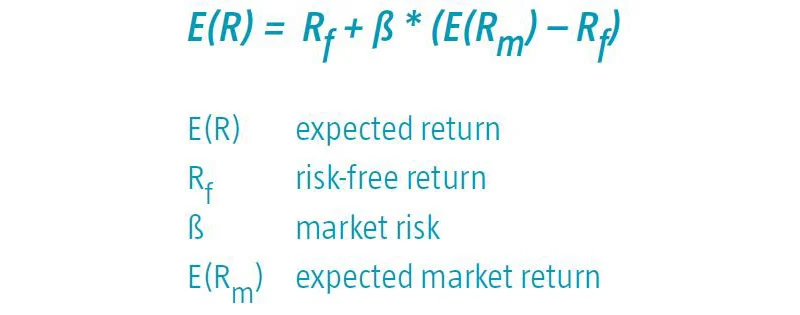Disclaimer
De informatie op deze website is uitsluitend bedoeld voor professionele partijen. Een professioneel belegger is: een belegger die beroepsmatig over voldoende kennis, deskundigheid en ervaring beschikt om de financiële risico’s van de zelf genomen beleggingsbeslissing(en) adequaat in te schatten.
Bezoekers van deze website dienen zich ervan bewust te zijn dat zij zelf verantwoordelijk zijn voor naleving van alle in hun eigen land geldende wetten en voorschriften.
Door op Akkoord te klikken, bevestigt u dat u een professionele belegger bent. Indien u op Niet akkoord klikt, wordt u doorverwezen naar de omgeving voor particulieren.
Quantitative investing
Capital Asset Pricing Model
The Capital Asset Pricing Model (CAPM) is the product of a financial investment theory that reflects the relationship between risk and expected return. The model assumes a linear relationship.
The capital asset pricing model formula for calculating expected return is:

The Capital Asset Pricing Model is used to forecast returns that can be obtained with risk-bearing asset classes. The linear relationship means that taking extra risk will on average lead to higher returns.
However, empirical tests performed in the early seventies* with this capital asset pricing model showed that the relationship between risk and return is less strong than the theory indicates.
* One of the first tests was a study performed by Haugen and Heins: ‘On the Evidence Supporting the Existence of Risk Premiums in the Capital Market’ (1972). They demonstrated that over the period 1929 - 1971, low-volatility equities realized extra risk-adjusted returns.















